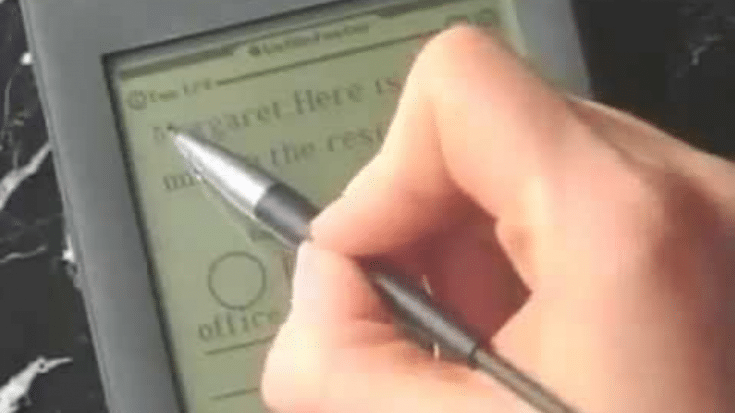7 90s Tech Gadgets That Were Overpriced and Useless

via TheAppleFanBoy - Apple & Computer Archives / YouTube
The 1990s brought an explosion of new tech gadgets, with companies aiming to cash in on the digital age. Some products offered real improvements, but others fell flat despite high price tags. Here’s a look at seven tech gadgets from the ‘90s that didn’t quite live up to the hype or justify their cost.
1. Apple Newton
View this post on Instagram
The Apple Newton promised to revolutionize personal computing as a digital assistant. Launched in 1993, it featured handwriting recognition that was supposed to replace keyboards. However, the technology wasn’t ready, and the handwriting feature often misread words, leading to user frustration. It also had limited storage and a short battery life.
At $700, the Newton was far from affordable, and the cost left many disappointed buyers questioning its value. The device eventually faded from the market, making it one of Apple’s notable failures before its later successes.
2. Sony MiniDisc Player
View this post on Instagram
Sony introduced the MiniDisc player as a high-quality alternative to CDs and cassettes. While it promised better audio and a portable design, the device’s price tag was steep, costing around $500 at launch. Additionally, the technology never gained widespread support, and few people wanted to switch from CDs.
The MiniDisc itself was also costly, adding to the expenses for users. Despite its advanced technology, the player quickly became irrelevant as MP3 players arrived in the late ’90s, making it a short-lived product that didn’t justify its cost.
3. Virtual Boy
View this post on Instagram
Nintendo’s Virtual Boy was an early attempt at virtual reality gaming. Released in 1995, it featured a headset that displayed 3D graphics in red and black. Unfortunately, the graphics were limited, and the games lacked appeal. Many users complained of headaches and eye strain after using it.
With a $180 price tag, the Virtual Boy was expensive for the time, especially given the lack of quality games. Sales were poor, and the product was quickly discontinued, marking it as one of Nintendo’s more unsuccessful ventures in gaming.
4. Diamond Rio PMP300
The Diamond Rio PMP300 was one of the first MP3 players, released in 1998. Although it could play music files, the device had only 32 MB of storage, which held about a dozen songs. At nearly $200, the Rio PMP300 offered limited value, especially compared to later music players.
Its clunky design and small storage frustrated users, making it difficult to use as a regular music player. While it helped spark the MP3 player trend, the Rio was quickly outpaced by newer, better models that could store entire music libraries.
5. Apple Pippin
View this post on Instagram
The Apple Pippin was Apple’s attempt to enter the gaming console market, released in 1996. However, the $600 console suffered from a lack of good games and limited third-party support. It was neither as powerful as other consoles nor as functional as a personal computer, making it feel like an incomplete product.
The Pippin’s high price and limited appeal kept it from gaining traction with gamers or tech enthusiasts. It quickly faded into obscurity, marking it as a rare failure in Apple’s product lineup before the company’s later gaming innovations.
6. Sony Data Discman
View this post on Instagram
The Sony Data Discman aimed to be a portable digital library, letting users read reference material on compact discs. However, the concept was limited by slow load times and a clunky interface. Its $550 price tag put it out of reach for many people, especially since it only offered a few functions.
Its bulk and high price kept it from finding a large audience. Eventually, the rise of more practical e-readers and portable devices made the Data Discman obsolete, proving that it was ahead of its time but overpriced and impractical.
7. Casio Wrist Camera
The Casio Wrist Camera was one of the first watches with a built-in camera, introduced in 1995. The camera could capture tiny, low-resolution black-and-white images, but quality was poor. The watch itself was bulky, and at over $200, it didn’t provide much for the money beyond novelty.
Most people found it difficult to justify the cost for such low-quality images and limited functionality. The Casio Wrist Camera quickly became outdated as digital cameras advanced, showing that some technology works better when it’s not on a wrist.













